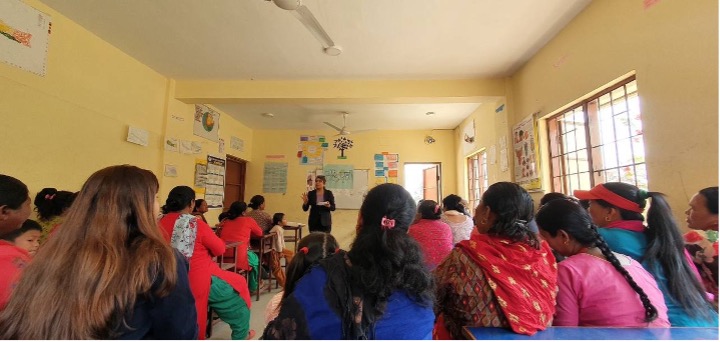Land stabilization at the Akasha Academy site Nepal
May 28, 2021
As part of the collaboration with Sustainable Mountain Architecture, the work in Suntakhan continues towards the realization of Akasha Academy. One crucial aspect is the preparation of the land for future constructions.

Preparation of the land for future constructions
As part of the collaboration with Sustainable Mountain Architecture (SMA), the work in Suntakhan continues towards the realization of Akasha Academy. One crucial aspect is the overall stabilization and preparation of the land for future constructions. Before the next monsoon starts, it is especially urgent to stabilize the area where a landslide occurred in 2020.
What is a monsoon?
Nepal, as well as Asia overall, is affected by a period of heavy rainfalls once a year, which can have a great impact on the structure and appearance of land. Monsoon is essential for the local ecosystem, watering of plants, and for clearing of dust accumulated in the months before. However, it is often a cause of landslides, especially in hilly and sandy areas such as ours.
Landslide 2020
In 2020, a landslide occurred at an especially vulnerable spot on the land. This happened due to the cutting of trees and plants in the past, which would have kept the land stable and prevented waterflow from causing damage. Lack thereof allowed for the land to simply slip away. Therefore, stabilization is most urgently needed in this area before the next monsoon to prevent further harm.
Redirecting monsoon rain
To stabilize the 2020 landslide area, constructions are currently ongoing in order to build three gabion walls on top of each other. Each gabion construction is about 8 meters long, consisting of wire baskets filled with stones (see picture). These walls function as natural steps, allowing plantation between them and can redirect as well as slow down the water streams.




It takes 3-5 monsoons for this part to be fully stabilized. During this time, nature will grow through and around the walls, enhancing the stabilization process. After this time, some of the stones can even be removed and reused.


